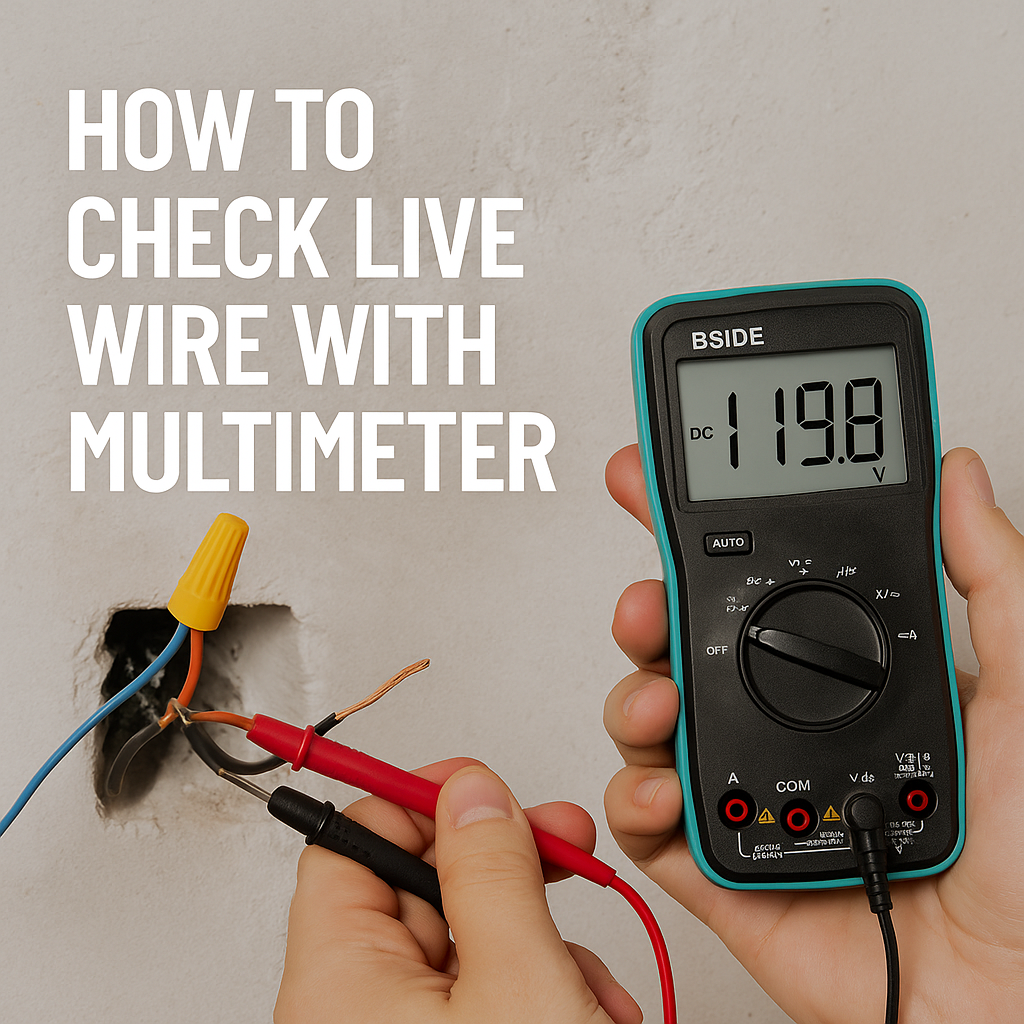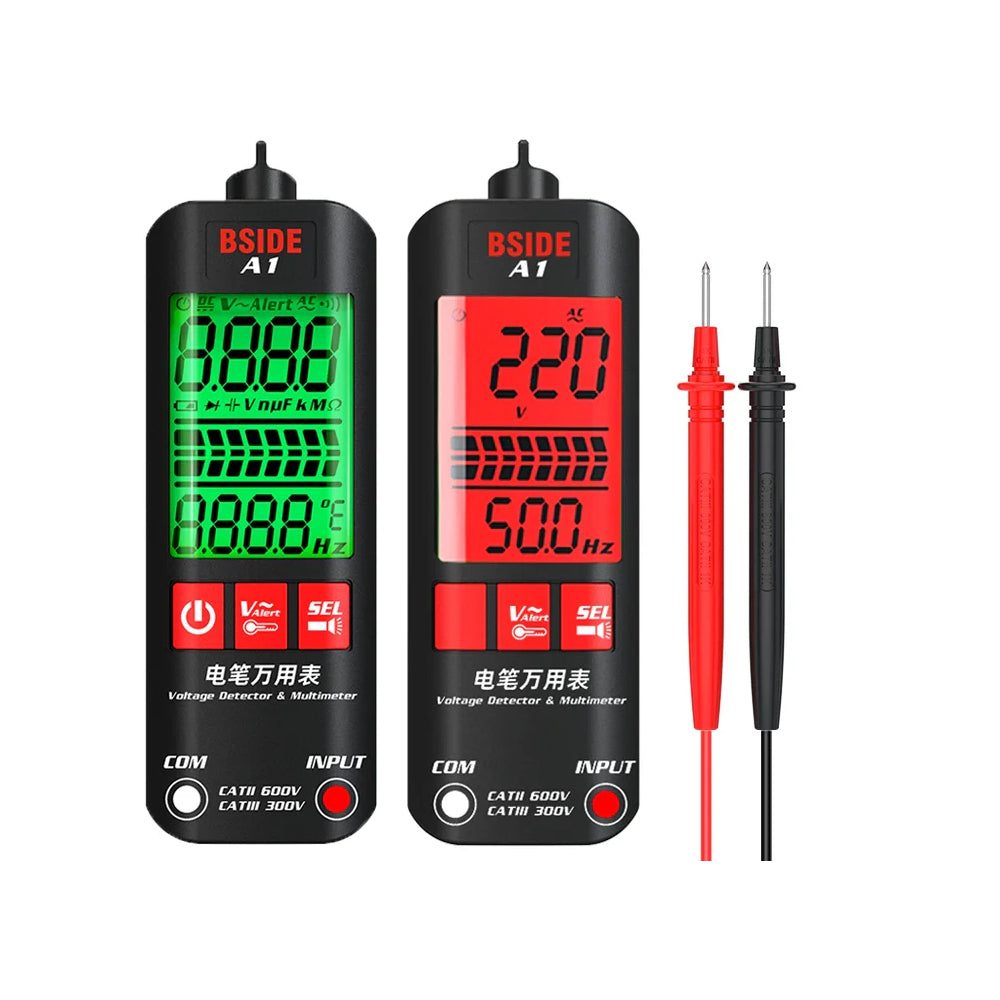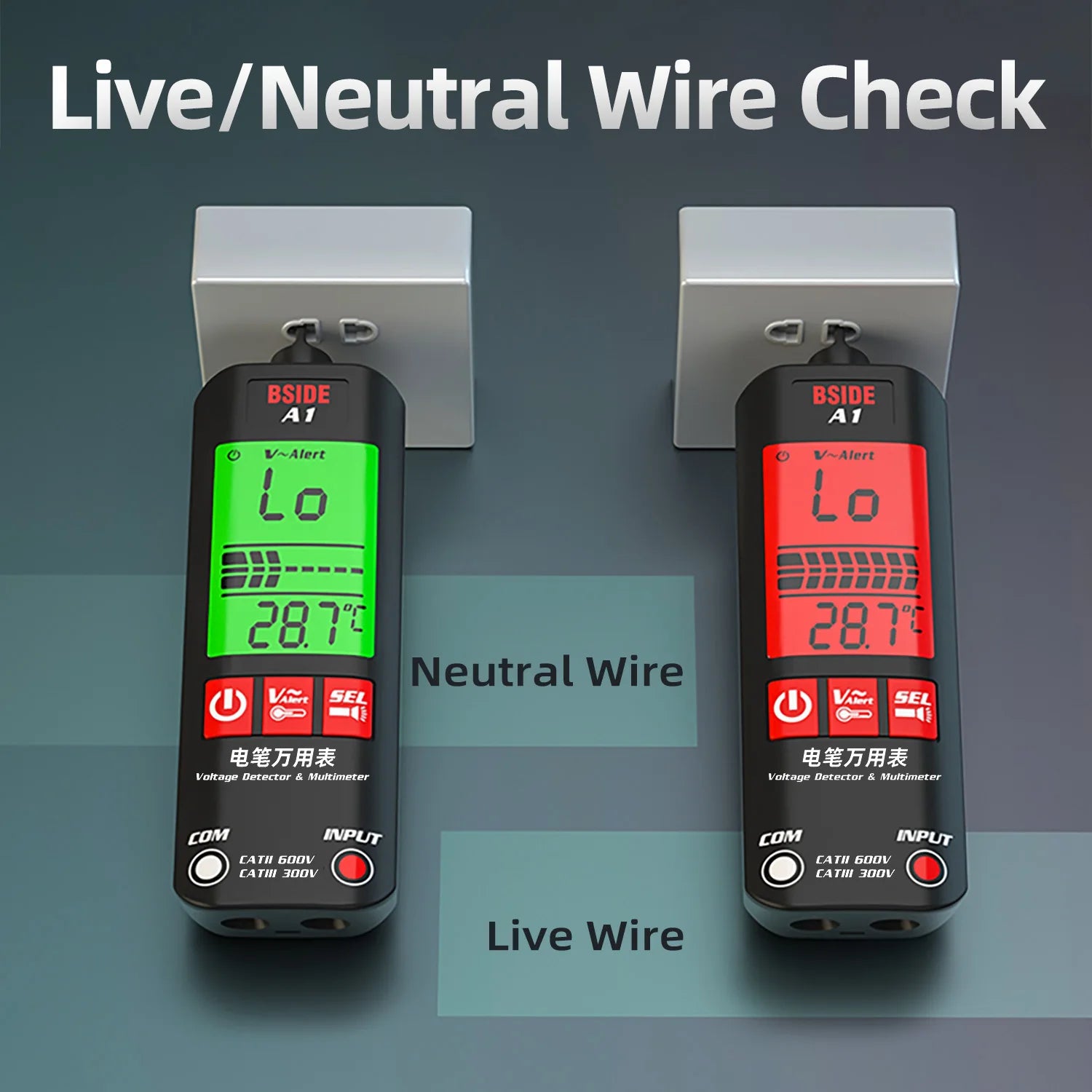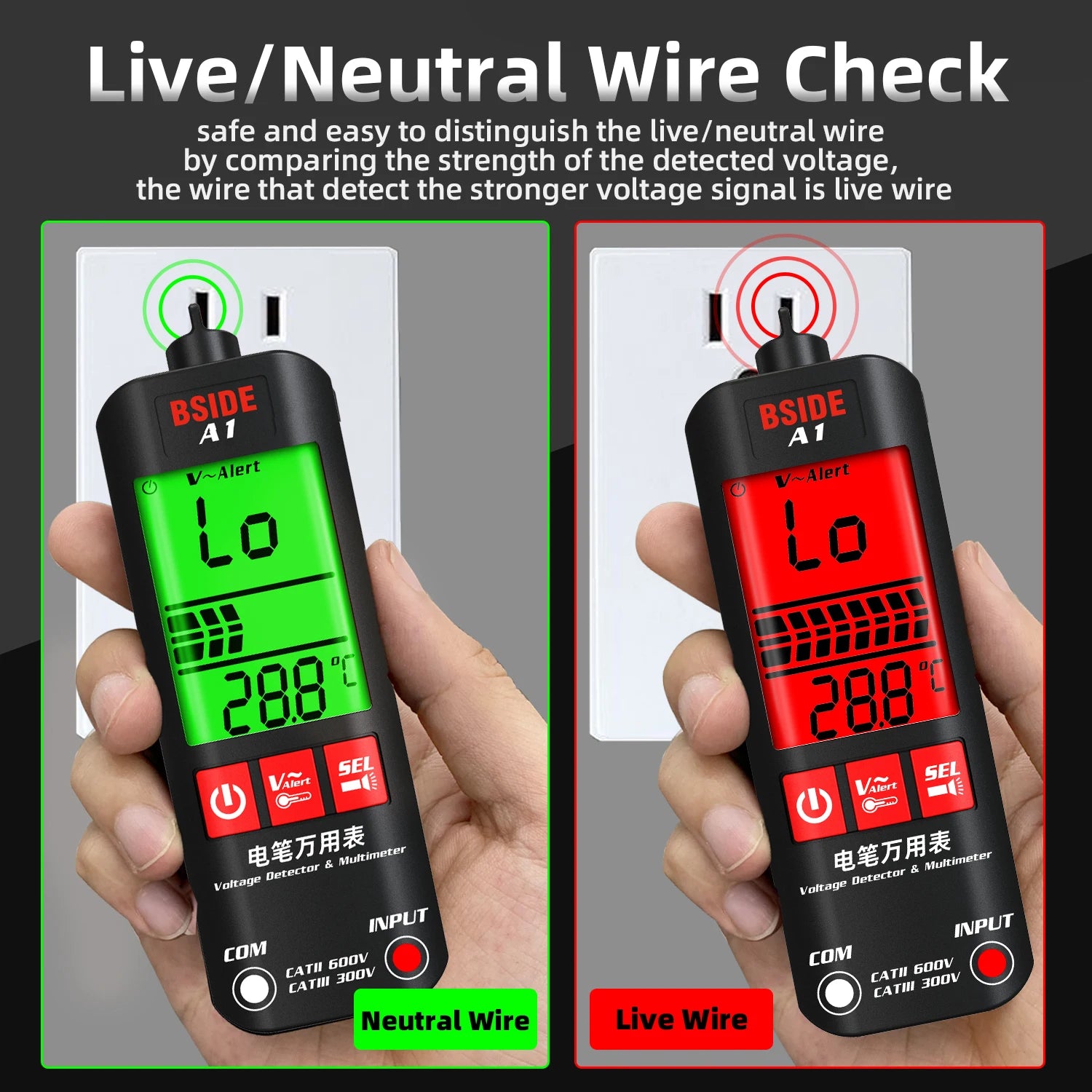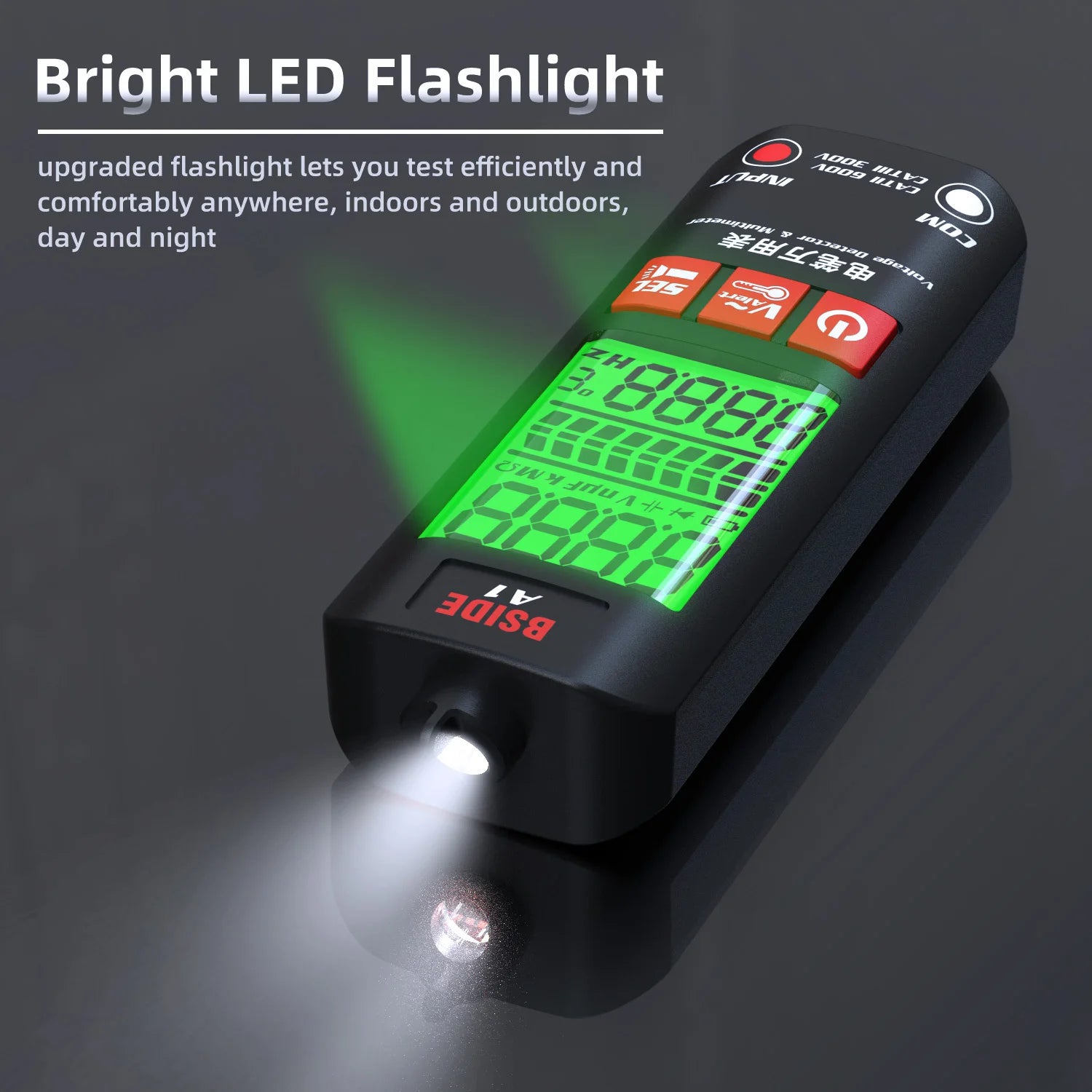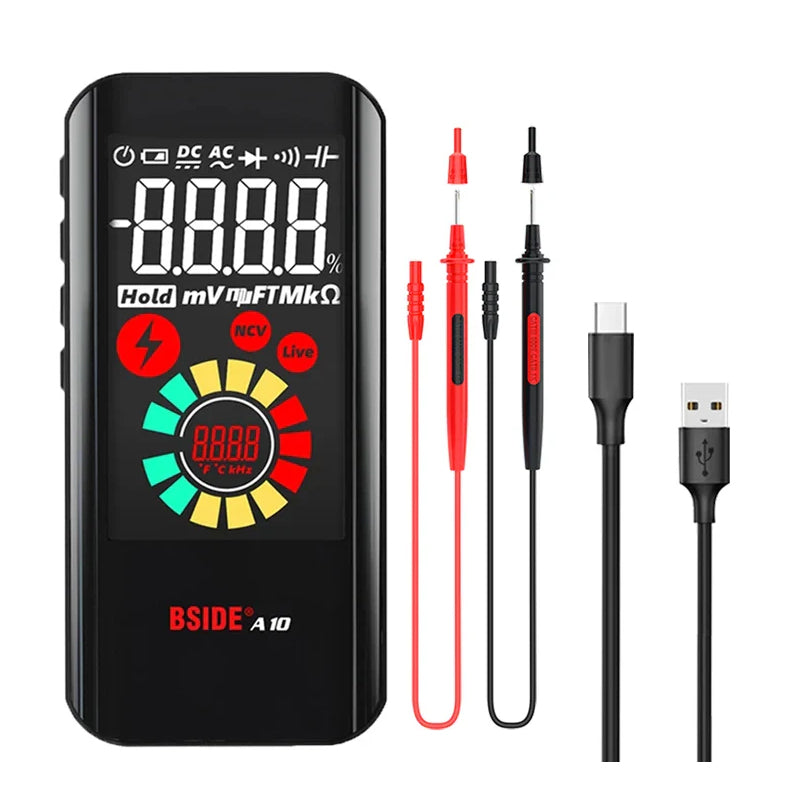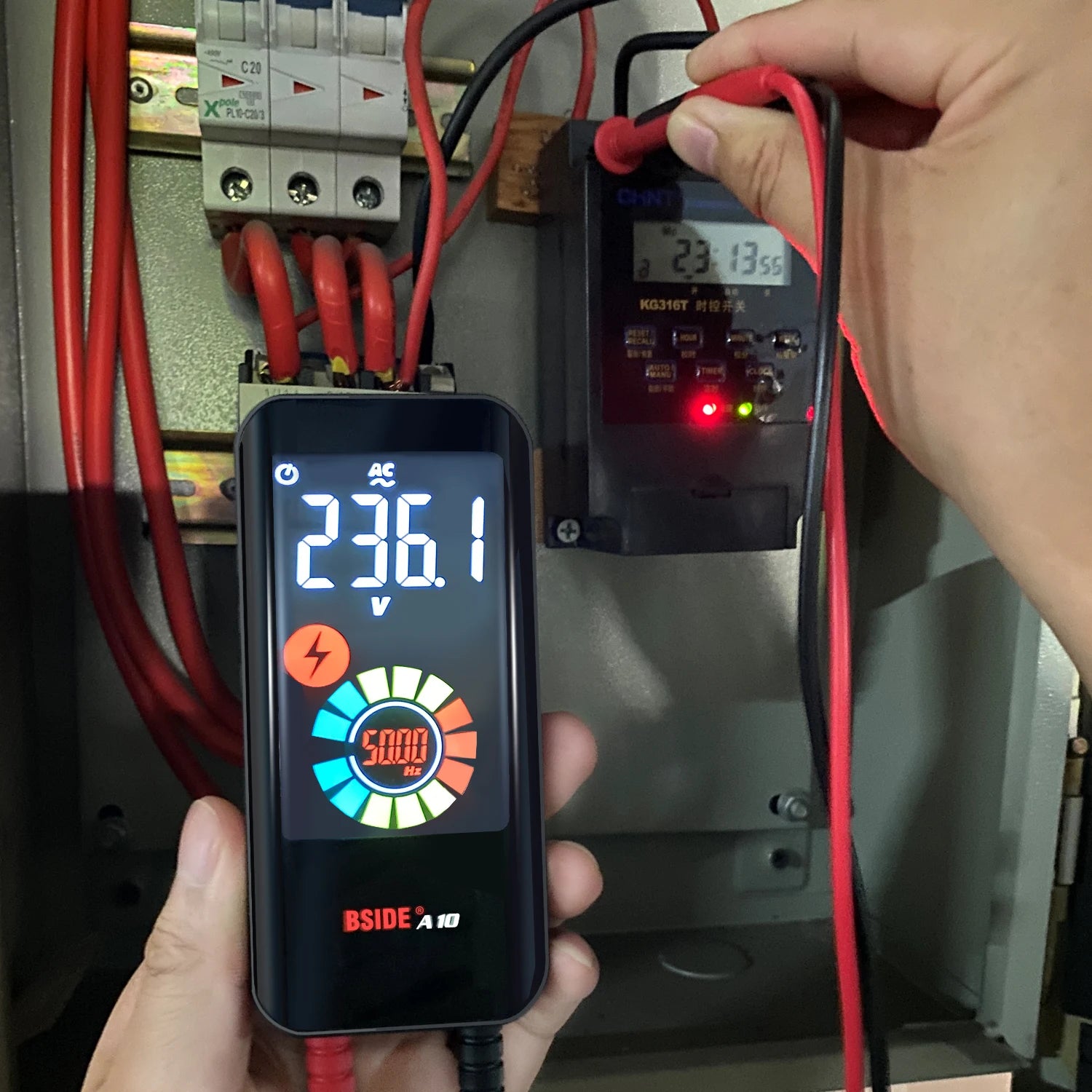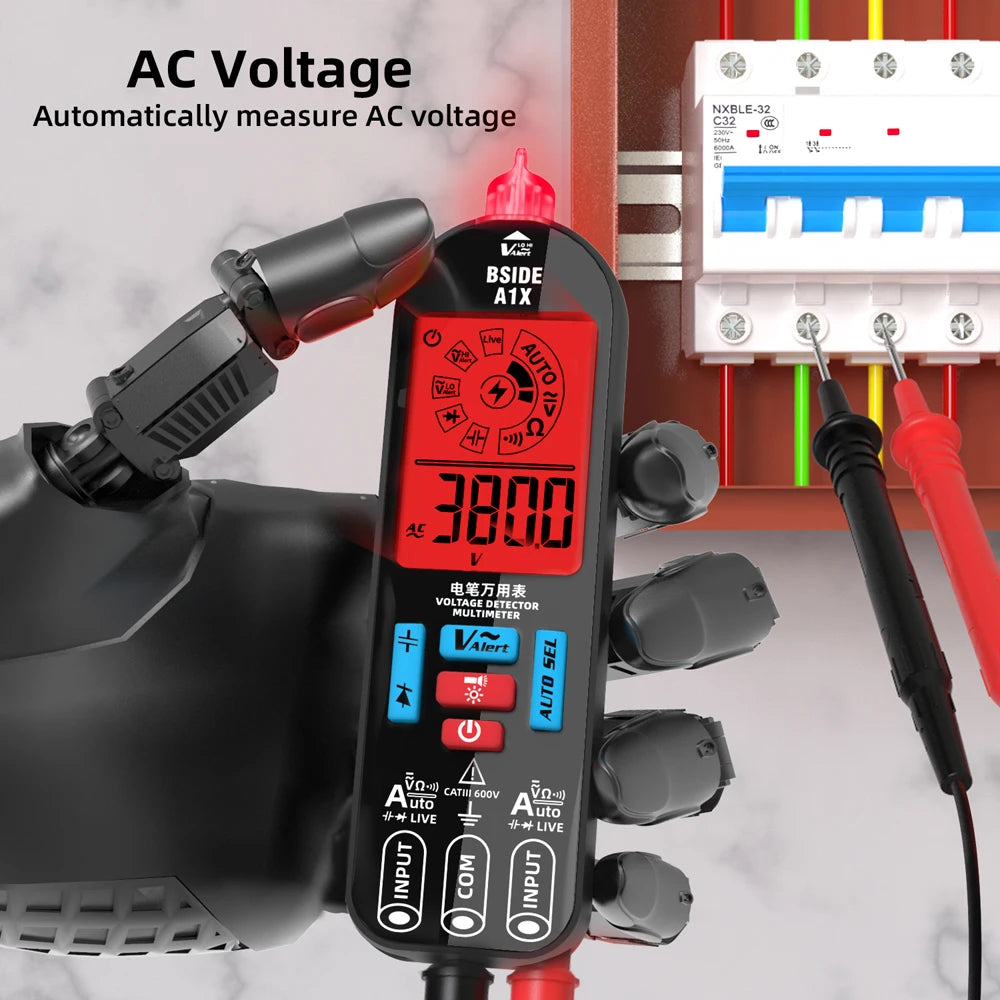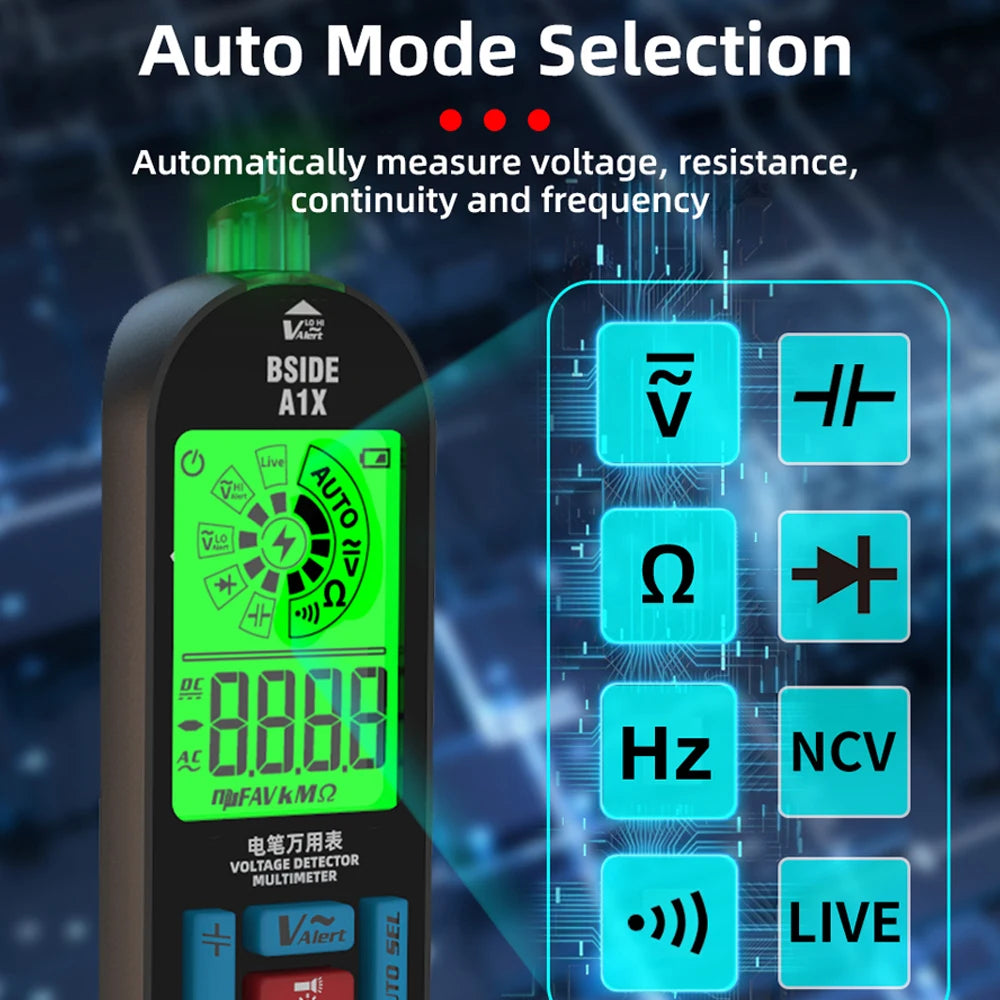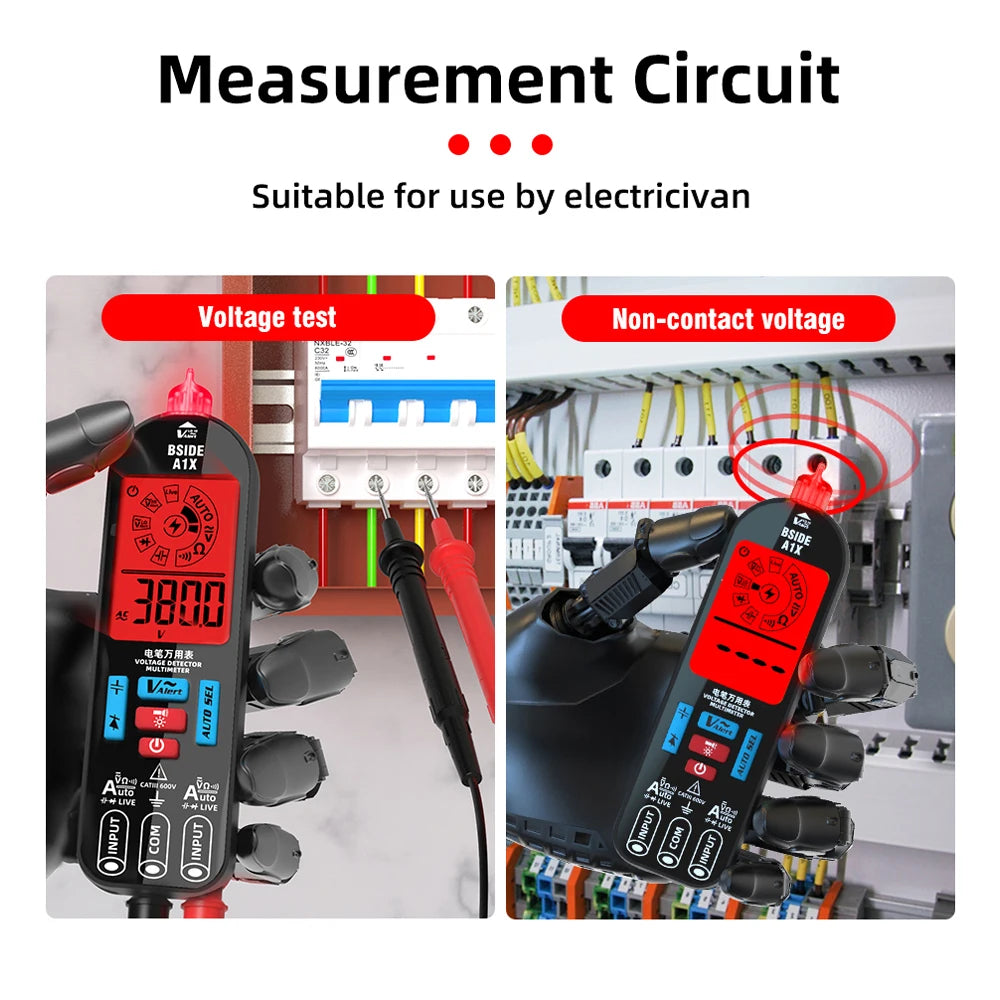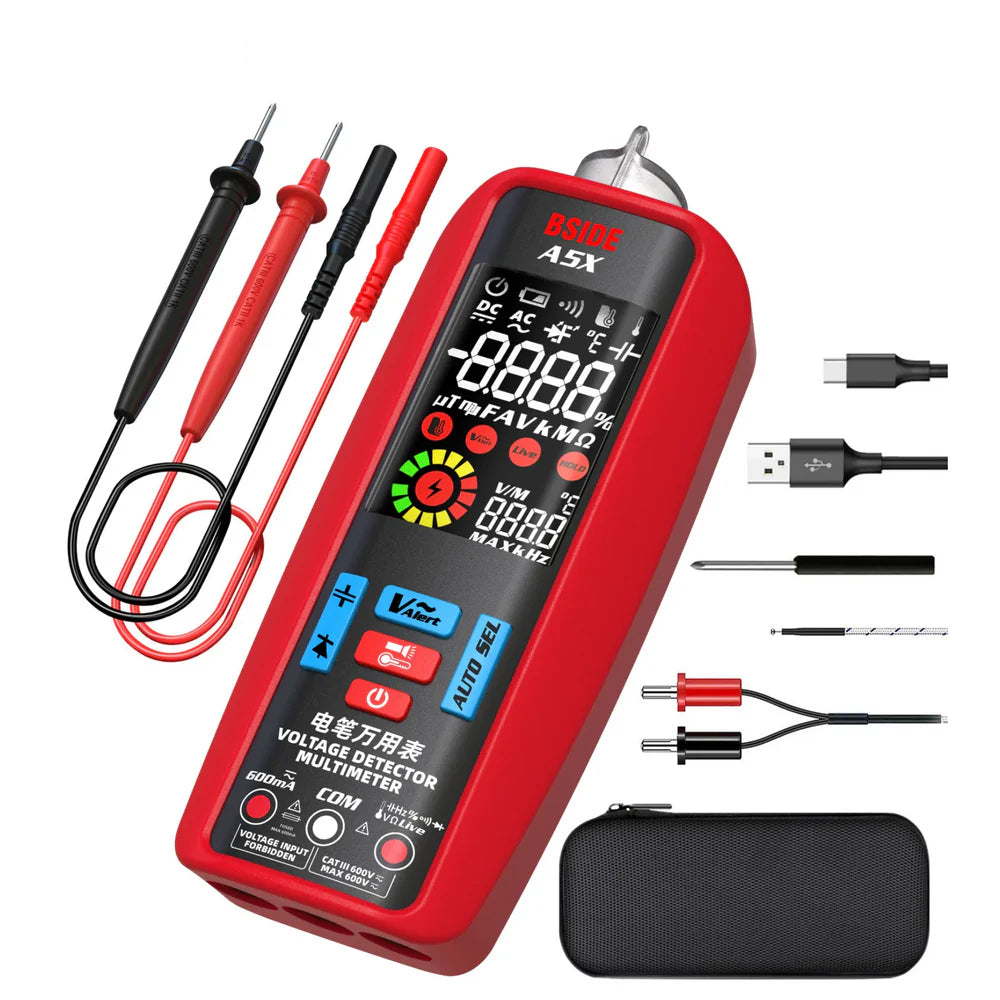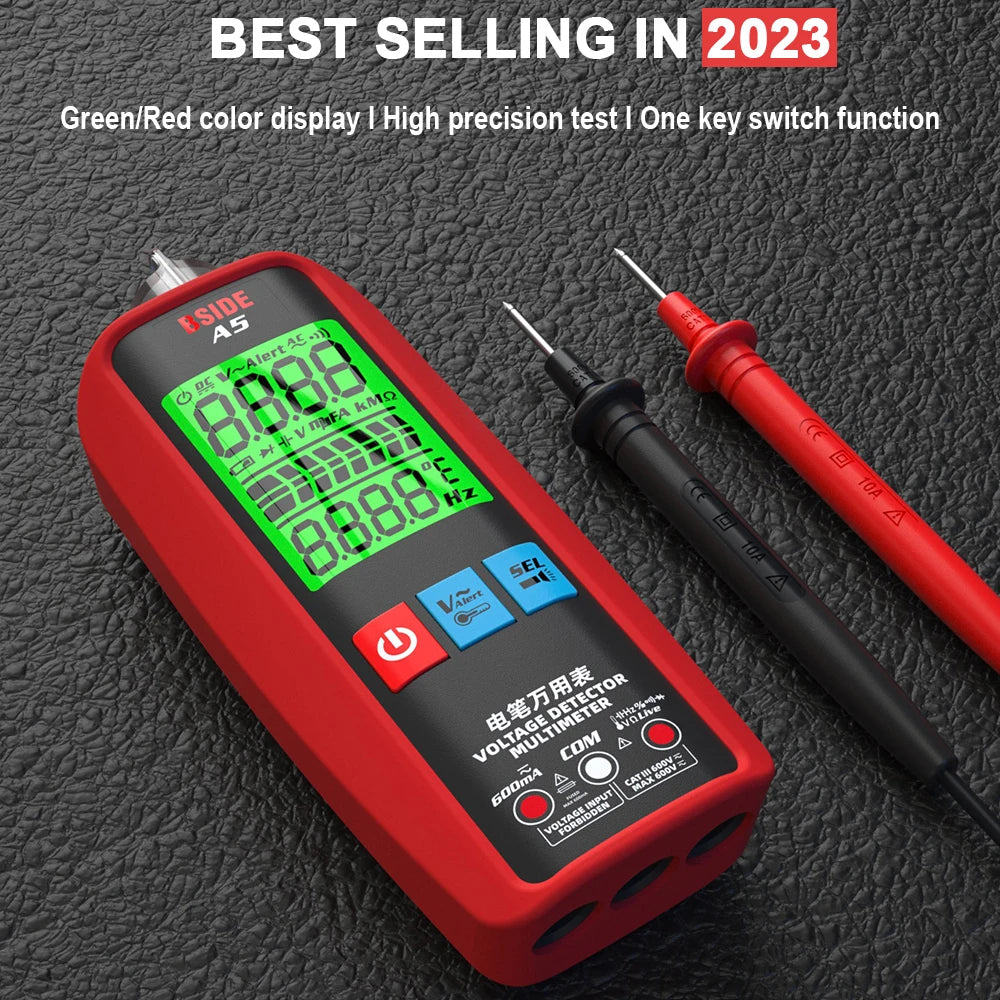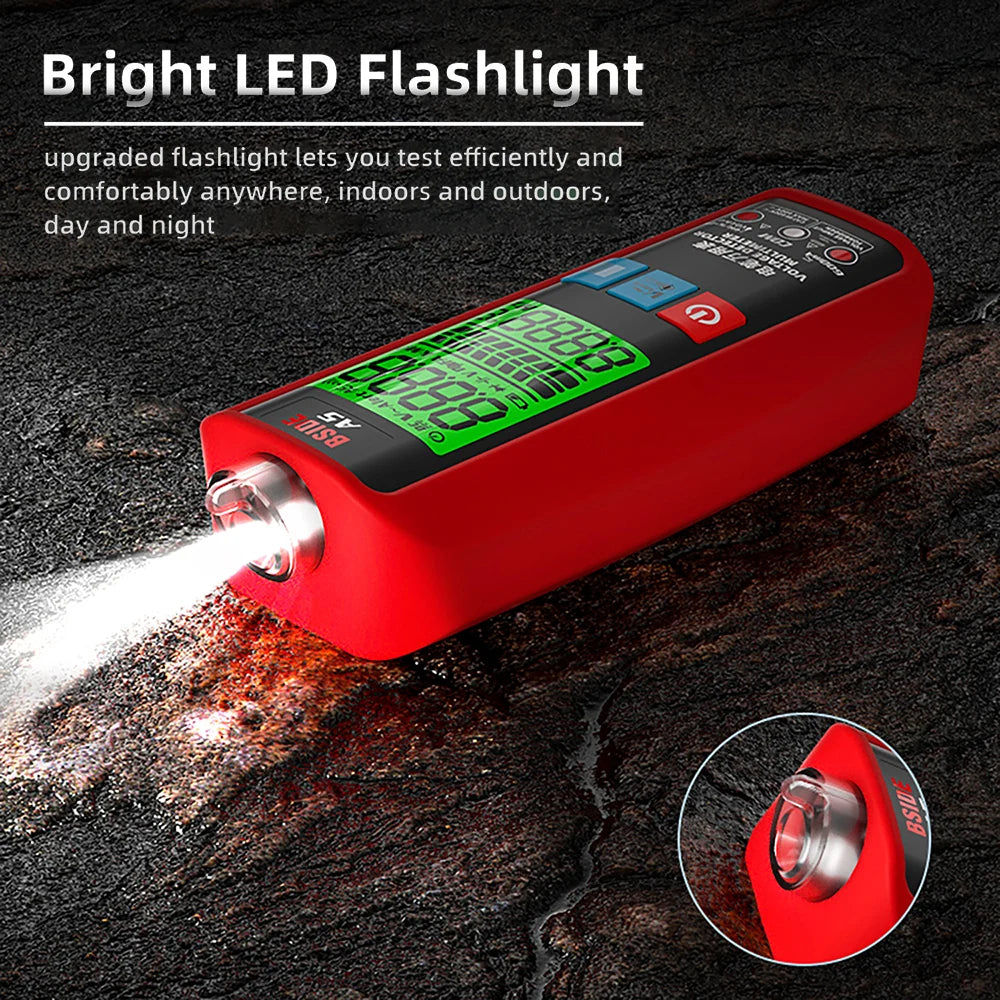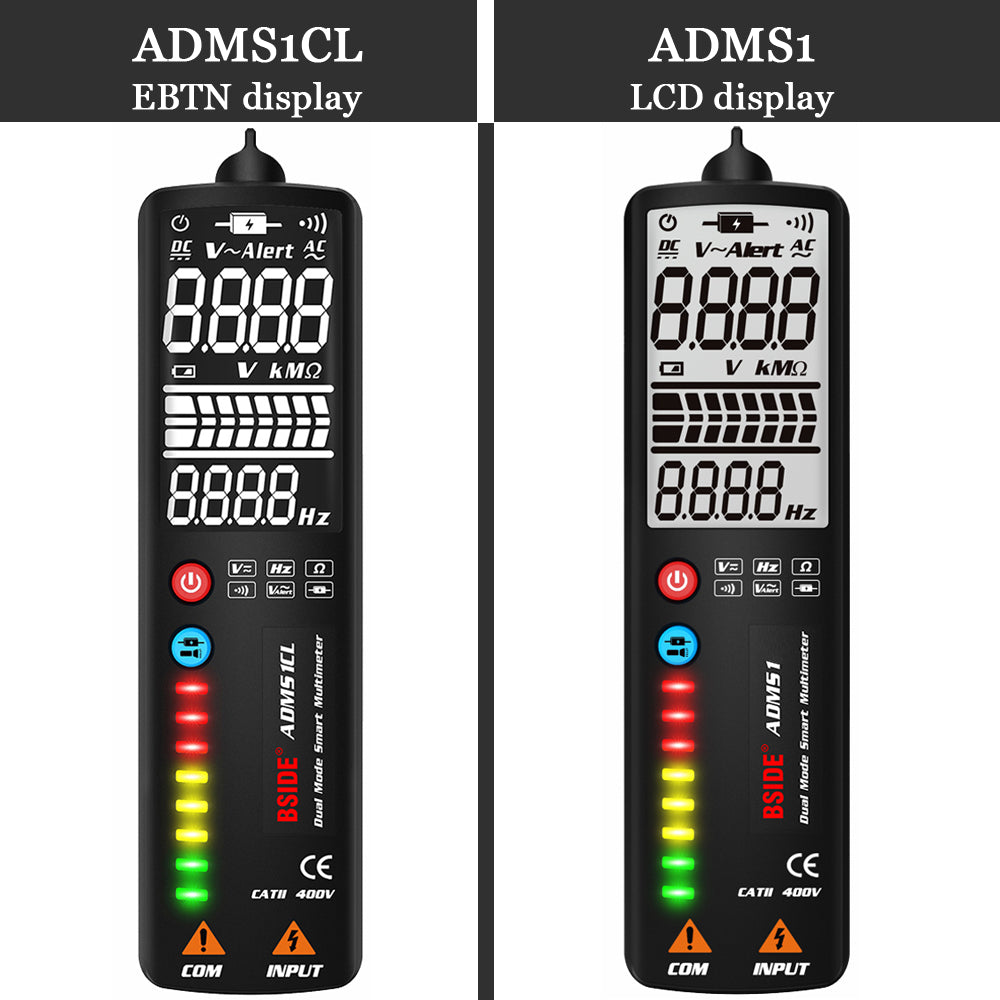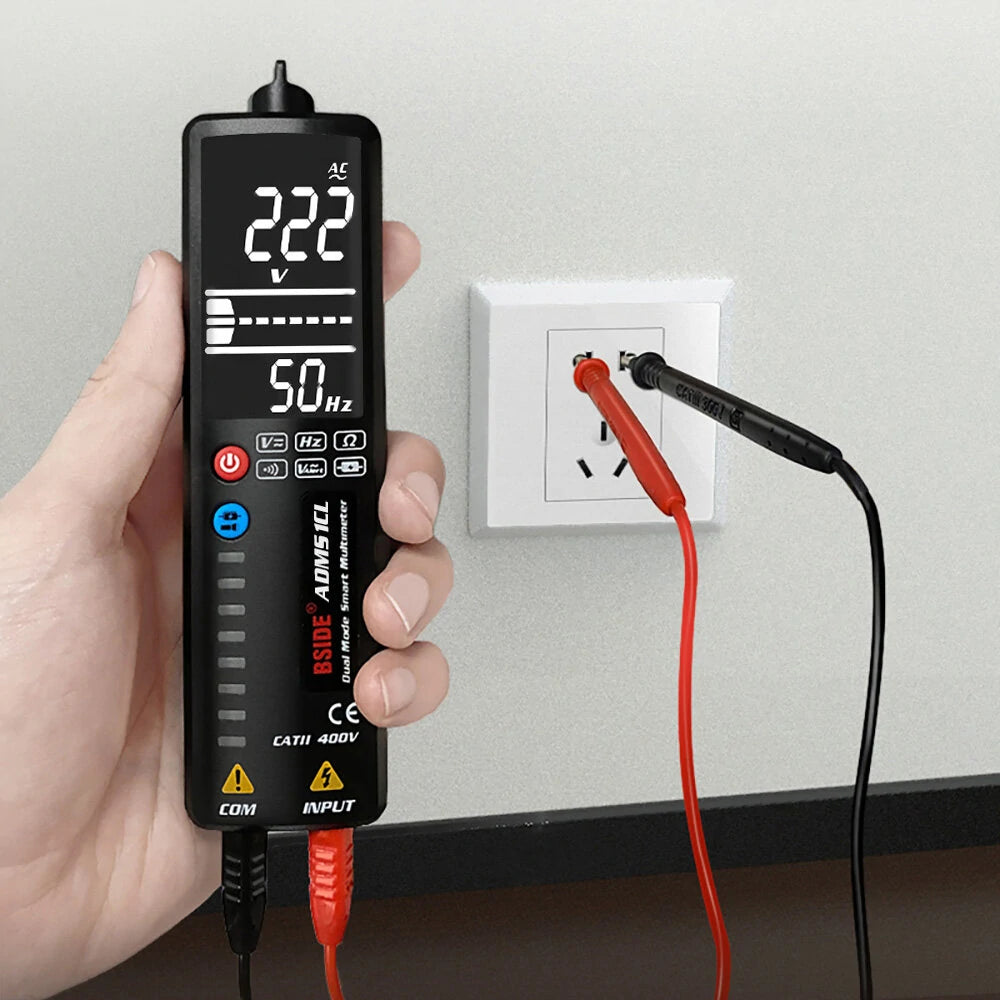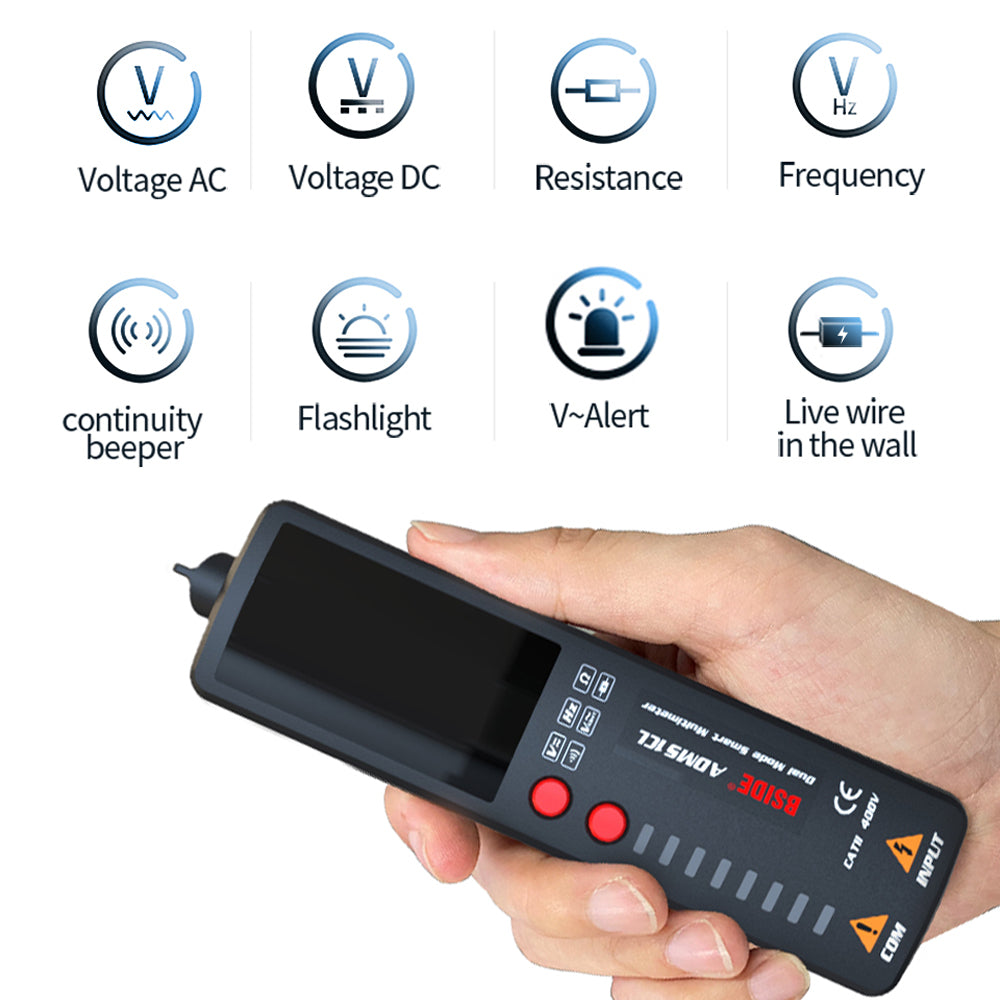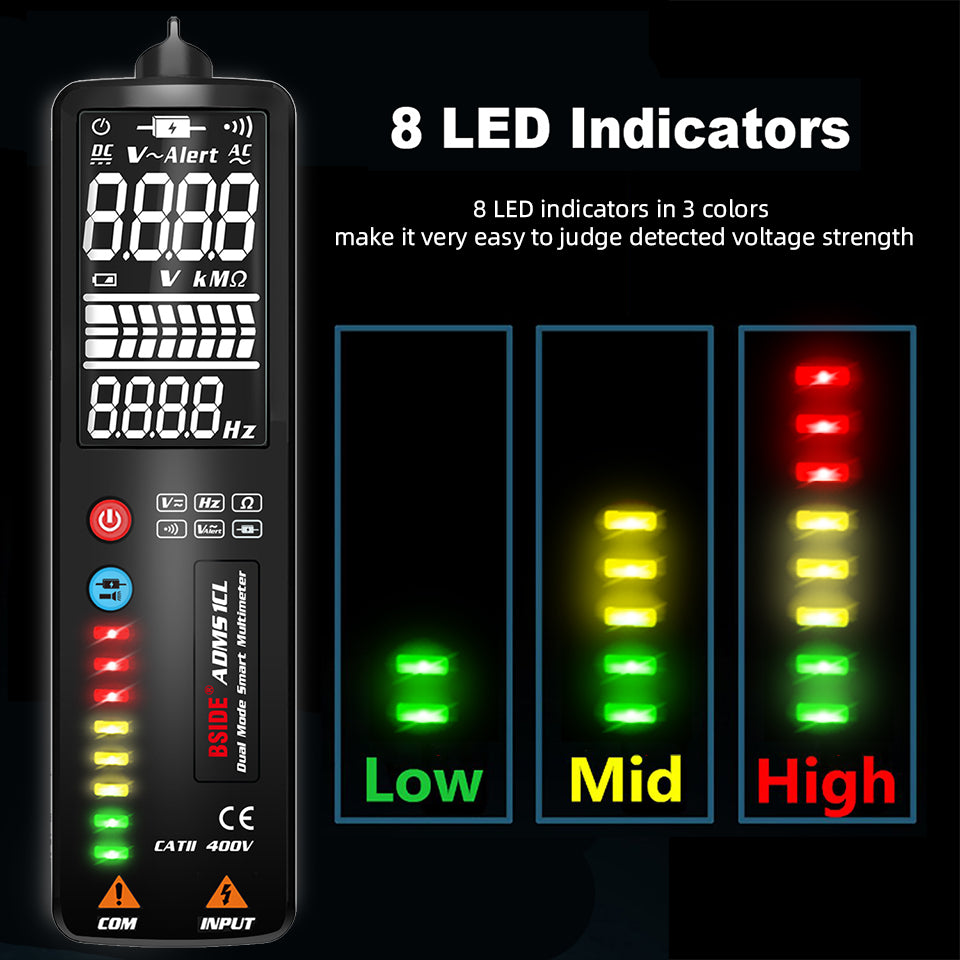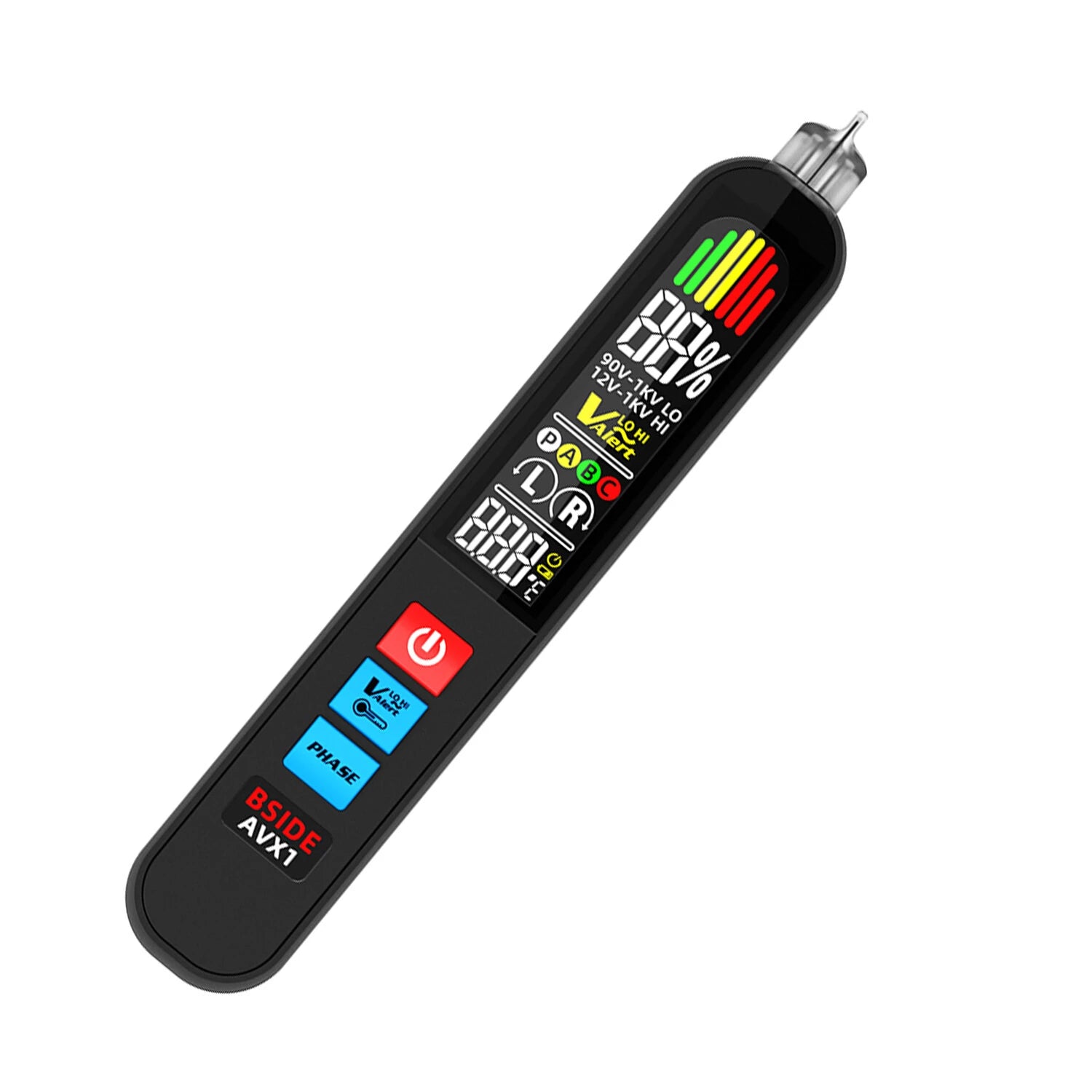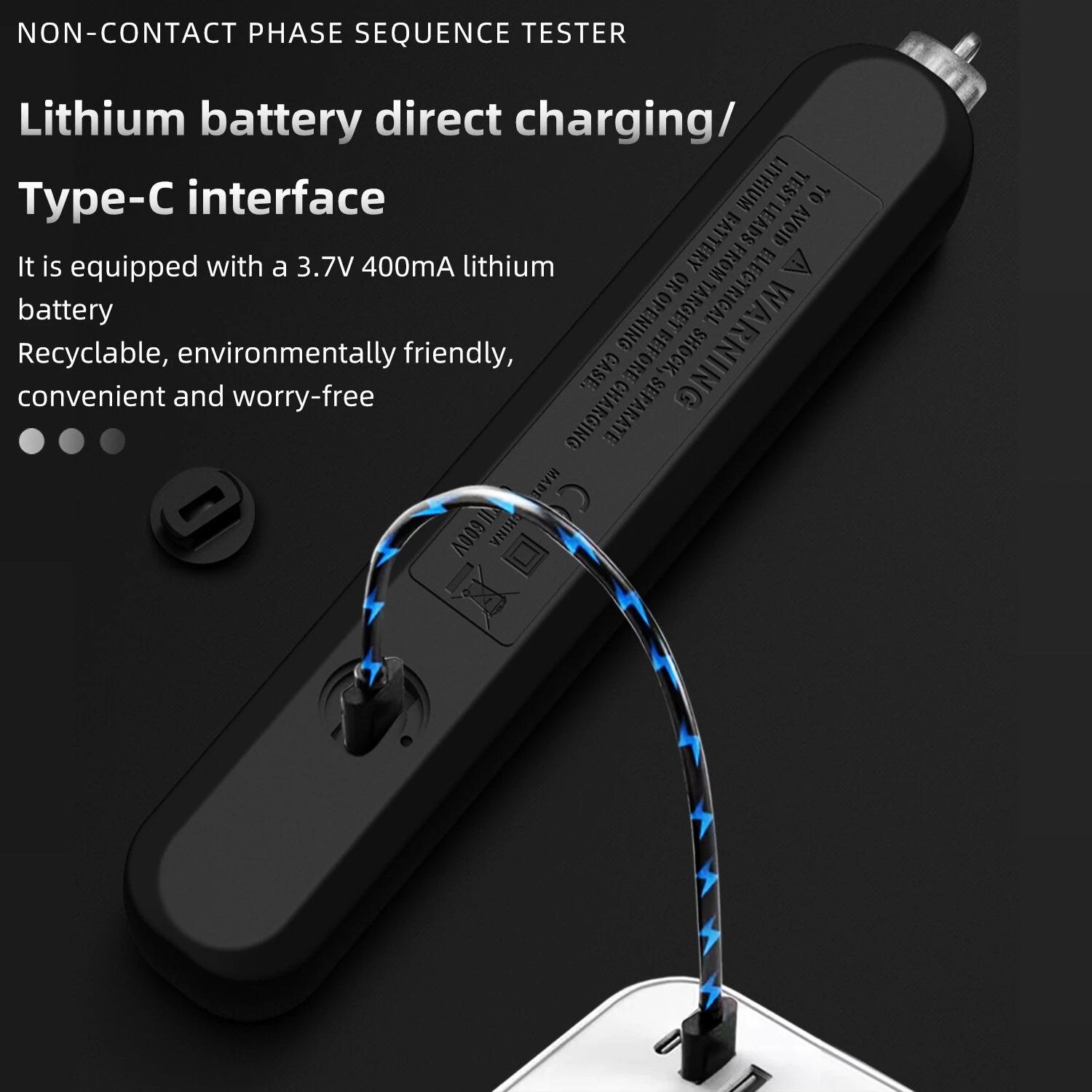🧰 What Is a “Live Wire”?
A live wire is a wire carrying an active electrical current or voltage. Touching it without proper safety measures can result in electrical shock. Live wires are usually found in:
-
Wall outlets
-
Switches
-
Light fixtures
-
Power tools
-
Appliances
Checking whether a wire is live helps ensure safety before repairs, upgrades, or installations.
⚠️ Safety First!
Always take precautions before testing live voltage.
-
Use a multimeter rated for the voltage range (CAT II, CAT III, etc.)
-
Wear insulated gloves if needed
-
Do not touch probe tips or conductors directly
-
Never use damaged probes or cracked meters
Multimeters like the BSIDE SH7 or S30 offer smart auto-ranging and overload protection to keep you safe.
📋 What You’ll Need
-
A digital multimeter with AC voltage mode
-
Standard test leads (red and black)
-
Access to the wire/outlet you want to test
🧪 How to Check a Live Wire with a Multimeter
🔌 Step 1: Set Your Multimeter to AC Voltage Mode
Most household and building circuits use AC (Alternating Current).
-
Look for the “V~” symbol on the dial
-
If using a manual-ranging meter, set the range to 200V or higher
BSIDE multimeters with auto-ranging will detect voltage automatically.
🧲 Step 2: Insert the Test Leads
-
Insert the black lead into the COM port
-
Insert the red lead into the VΩmA (or just V) port
🕵️ Step 3: Test the Wire or Outlet
There are two common ways to test a live wire:
1. Wall Outlet / Terminal Block:
-
Insert one probe into the live (hot) slot
-
Insert the other into the neutral slot
-
A reading between 110–130V (US) or 220–240V (EU) means the wire is live
2. Single Exposed Wire:
-
Touch the red probe to the wire
-
Touch the black probe to a ground (metal box, known ground wire, etc.)
If the screen shows a voltage reading, the wire is live.
✅ Step 4: Interpret the Reading
| Display Reading | Meaning |
|---|---|
| 0.0V | No voltage — wire is dead or disconnected |
| 120V / 230V | Wire is live and powered |
| OL or overload | Possibly too high — check range or probe contacts |
⚠️ Extra Tips
-
Don’t test with bare hands — always use the probe handles
-
If you hear a buzz or click while testing, stop immediately
-
Avoid using resistance mode (Ω) on live circuits — it can damage the meter
🧰 BSIDE Multimeters Make It Easier
BSIDE digital multimeters offer:
-
Auto-ranging AC voltage mode
-
Backlit displays for dark areas
-
Dual display for easy readings
-
Built-in safety fuses and anti-burn protection
Popular models like SH7, S30, and S11 are perfect for home and pro use.
✅ Conclusion
Knowing how to safely check a live wire with a multimeter can protect you from serious accidents. Whether you're fixing an outlet or verifying power, this skill is essential for any homeowner, electrician, or DIYer.

